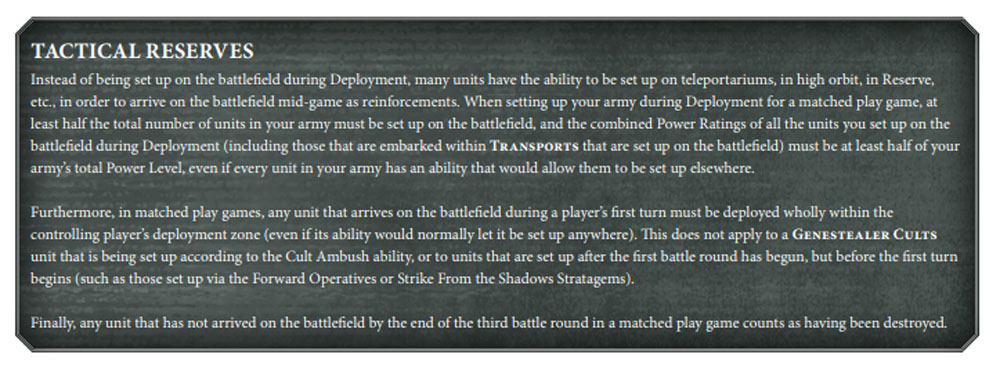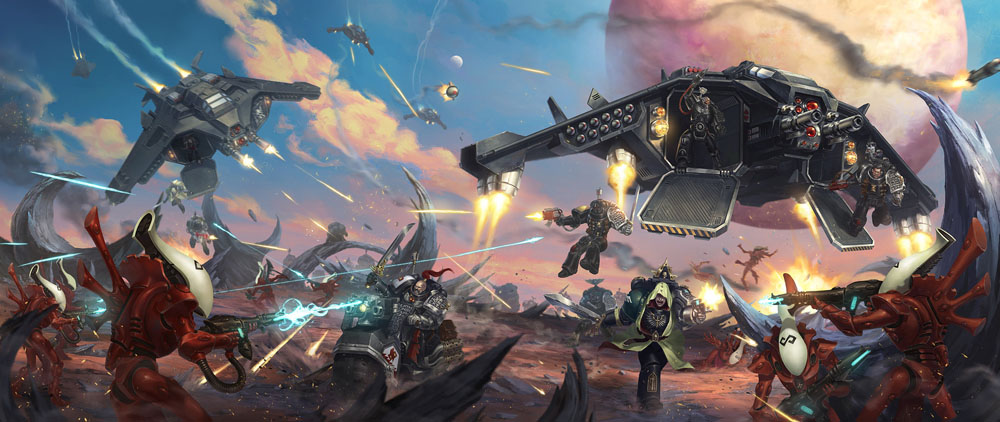Discussions of the new FAQ are starting to calm down, and we can share our impressions. It will be especially interesting for those who missed it and did not read it. Some conclusions may seem hasty, and, of course, a full understanding requires repeated playtests. But here is our vision at the moment.
In fact, the changes expected with such trembling turned out to be not so much. All fits into incomplete 6 PDF-pages. The rules that used to be listed in the "beta" stage came into full right: Increasing the Smite difficulty by 1 after each cast, and the ban on targeting the character, if he is not BOTH visible, And the closest unit. And if the second, in fact, was implied initially, and does not change the game much, the first one should be looked at more precisely.
It is obvious for everyone, including Games Workshop game designers, that Smite available for any psyker eliminates many faction spells. Why should you try to cast a more expensive, and less useful spell, if there is always Smite, the use of which, moreover, is not limited? And the spam of mortal wounds definitely makes the game less interesting. From this point of view, the change is absolutely correct.
However, what about the armies, based on magic? For the Thousands of Sons and Gray Knights, it is separately written that the increase in value concerns only single characters. Units such as "Brotherhood of psykers" cast in as usual. But what should we do with ... the demons of Tzeentch? This army is not very good, and the spam of mortal wounds was, perhaps, one of the few effective solutions. The alternatives from their own magic are few, and they cannot be repeated at all. On the other hand, if you managed to cast Smite with 11, you still get the desired D6 wounds. And large birds still have bonuses for a cast. In general, the innovation, successful from the overall game balance point of view, but unfair to some factions.
Instead of the rules that came out of beta, two new ones were added there. This means that their use is recommended, but not mandatory for everyone. The first, in fact, prohibits deepstrike (and everything that is now called otherwise, but performs the same function) on the first turn for both players. You cannot place units outside your deployment zone. Despite the discontent of alpha strike fans, the solution, in general, is correct. It’s just like in previous editions. The correctness of the solution lies in the fact that, waiting for a deepstrike on the first turn, you, naturally, use some units as screen, and take valuable units away. However, you won’t stand still until the second turn, and you will have to change the position of your squads. But at the same time, you still have to keep in mind the prospect of deepstrike on the next turn. Adds exactly that tactical depth, which this edition lacks. In addition, this does not apply to the stratagems, which makes it possible to move squads closer to the enemy, making them more valuable. Still would be great if they returned a similar rule to droppods ...
Another beta rule prohibits the detachments based on the only one main keyword, as before. Now you need two. A nice innovation, which will limit sports alliances with no reference to background which started to return in this edition.
Next, come the general rules, the changes of which are no less important. Perhaps, the most pleasant is the increase in the number of command points for large detachments. Now the Battalion gives you 5 instead of 3 and Brigade 12 instead of 9. This refers to what we’ve discussed a lot in our reviews - the uselessness of the stratagems mechanics when there are so few command points to use them. It's great that game designers of GW also realize this and take measures. Although, growth could be more significant. 2-3 points - this can be just one additional stratagem.
Another thing that applies to many armies is the ban on the simultaneous use of different variations of FNP - if you have several abilities that allow you to ignore the wounds for a certain dice roll - you no longer use them one by one but have to choose the only one. It's also logical, because it was in past editions, but weakens, for example, Ultwe craftworld.
But strict detachment restriction for the tournament game is not so logical. The intention, of course, was good - again, to protect the game from the cadavers. But the Dark Eldar, with THE ARMY SPECIAL RULE that encourages you to take many small detachments, are not pleased at all. Add the same ban on the repetition of units (except transports and troops) more than 2/3/4 times, depending on the game scale, and you will get, perhaps, the most contradictory change in the rules. The fact is that some armies simply do not have so many effective units to use them without repetition. The long-suffering Sisters of Battle, for example. Fortunately, this rule is RECOMMENDED and is intended only for tournaments.
The remaining global changes relate to the nuances of using units without a codex (such as the assassins and the Legion of the Damned), which do not fundamentally change anything, and the price increases for the units which were supposed to get it - the main ones in this list are the Eldar Dark Reapers, Guilliman, and the flying Tyrants. But there are still a lot of interesting things in codex FAQ’s. However, this requires more careful study. Now, you can note the ban on using the Warptime for the Chaos units arrived from reserve (goodbye, the most popular tactics), and the PRICE for the added Poxwalkers is the complete destruction of yet another popular tactic.
In general, the vector of the changes is clear and correct - the game is moved towards background and roleplay style, stopping the spam of the similar units, spells, and abilities. However, this is not being done carefully enough, and some factions definitely suffer from it. Including those whose codices were issued recently, and therefore, there is no place for changes. And what do you think about the new FAQ?





